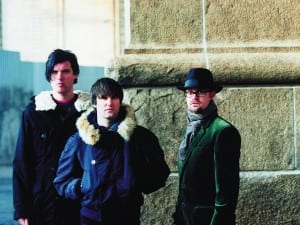A mysterious final word ‘mayonnaise’ is how Richard Brautigan ended his most well known book, Trout Fishing in America. The title for the current group exhibition at Franklin Street Works in Stamford, CT takes its name, Kool-Aid Wino, from one of the chapters in the book. It is a story about a disabled child in a poor family who becomes addicted to Kool-Aid (without even adding sugar) in the same way that an unemployed adult might become an alcoholic. Sad, funny, and slightly absurd sums up the story, as with most of the Brautigan’s work. Clare Barliant, who curated Kool-Aid Wino, employs Brautigan’s method of trial-and-error writing to form the basis of this show. It has been speculated that the word ‘mayonnaise’ was not supposed to be added to the book, but that Brautigan accepted the error as a serendipitous slip. This is what Barliant champions: that some of the most successful pieces of art are riddled with mistakes that have triumphed instead of travestied.
The opening act was Aki Sasamoto, whose performances are notoriously infused with extemporaneousness. Her acceptance of anything that happens during the performance as part of the performance is indicative of the show’s theme. Sasamoto’s works supersede the notion of error such that all happenings are a part of the performance. A hybrid of Yvonne Rainer’s everyday gestures and Andy Kaufman’s mondo comedy, Sasamoto’s fun performances often capture a spontaneity loaded with ambiguous (and probably false) allegories. The vestiges of Sasamoto’s piece are a trio of sculptures consisting of a deconstructed cabinet, cement filled drawers, and the scribblings of a mad-woman.
A once removed way of entertaining the same ideas is Jenny Perlin’s three-channel video Sight Reading (2004). Perlin filmed three piano players performing Robert Schumann’s piano concerto in A minor, though none play it perfectly. It is an amateur crack at a difficult piece, with the artist incorporating black lacunae following each player’s mistakes. The mistakes, though still accepted, are exaggerated in her video to the point that the error is the subject. Owen Land’s film, Film in which There Appear Edge Lettering, Sprocket Holes, Dirt Particles, Etc. (1965-66), on the other hand, is a film about errors, but errors that are inherent to the medium that he used. As the title indicates, Land’s structuralist film takes as its subject the naturally occurring detriments to film, allowing them to be the hero rather than the foil of the medium. The result is a spectacular accumulation of nothing other than the natural conditions of film.
Throughout all of the works, there is a substantial emphasis on chance. Choi Dachal’s photograph series The Malformed Intersection (2012) pairs similar but different men’s shirts, buttoning them together to look like one in a cheap trompe l’oeil. Dachal’s pictures rely on a fortuitous formal composition between objects that already are supposed to have a marketable composition figured out. And Frank Heath’s Former Structure (2012) sculptures challenge the readymade by dissecting former private property (belonging to the likes of City Hall, the American Exchange National Bank, etc.).
With a sombre note of reflection, the artists in the show want to take the notion of chance to another level. Accepting errors (which has been embraced by many since Duchamp and Cage made it a status quo) is what Kool-Aid Wino wants to do. The idea is that art should be a process of discovery, and since mistakes are part of that discovery they should not be edited out.
Nickolas Calabrese
Kool-Aid Wino, 20 July until 22 September, Franklin Street Works, 41 Franklin Street, Stamford, CT 06901. www.franklinstreetworks.org
Credits:
1. Jenny Perlin, Sight Reading, 2004. Courtesy the artist and Simon Preston, New York
2. Rotem Linial, Fortuna, 2013. Courtesy the artist





